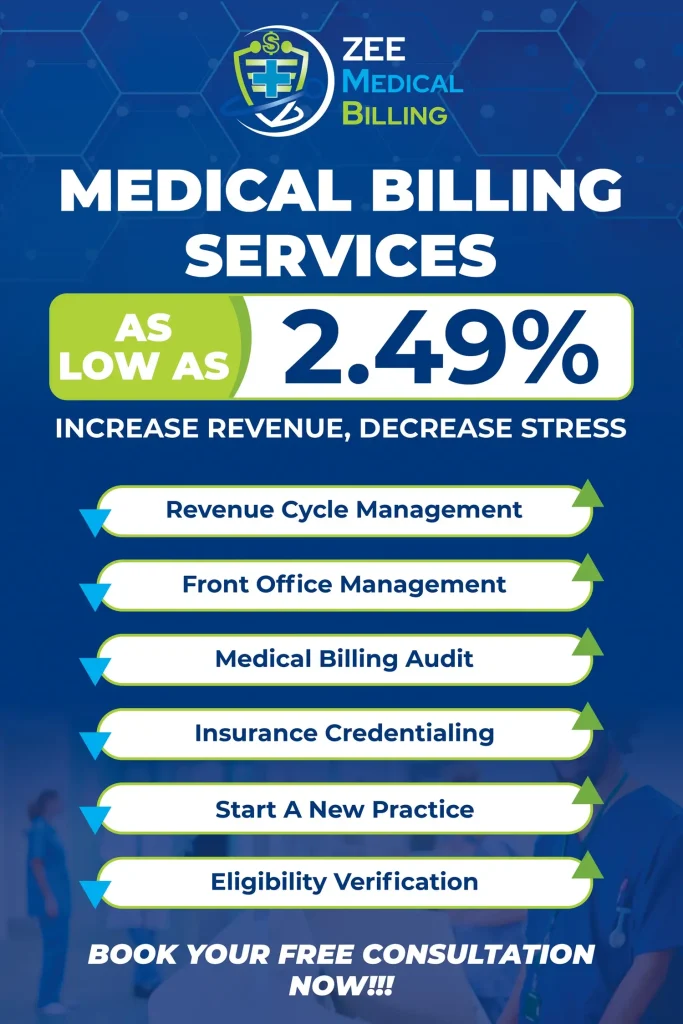Modifier 51 is a common CPT (Current Procedural Terminology) modifier. Medical billing professionals use it. This modifier shows that the medical team performed multiple procedures during the same patient visit. Understanding its correct application can help prevent claim denials and ensure accurate reimbursement.
What Is Modifier 51?
The official definition of Modifier 51 is the “Multiple Procedures” modifier. It signals that the same provider performed more than one procedure on the same day. It informs insurance companies that the procedures are distinct yet performed together and helps determine the payment order.
In simple terms, if a doctor performs multiple procedures in one session, they use Modifier 51. They add this modifier to the secondary procedures. The data shows that only the main procedure receives payment at 100%. In contrast, they refund the subsequent ones at a reduced rate.
Read More: What Does Modifier 26 Mean in CPT Medical Coding?
Why Modifier 51 Matters in Medical Billing?
- Ensures accurate payment: Without it, the system may not apply the correct reduction.
- Prevents claim rejections: Proper use avoids delays or denials from payers.
- Communicates multiple services clearly: It helps coders and payers understand the clinical context.
Modifier 51 vs Modifier 59: Key Differences
While Modifiers 51 and 59 are both used to describe multiple services, they serve distinctly different purposes.
| Feature | Modifier 51 | Modifier 59 |
| Purpose | Indicates multiple procedures in one session | Indicates distinct or unrelated procedures |
| Usage Context | Same session, same provider | Different anatomical sites or times |
| Reimbursement Effect | Reduces payment on secondary procedures | CPT codesare not typically billed together |
| Applied To | CPT codes are not typically billed together | CPT codes are not exempt from 51 |
When to Use Modifier 51?
Use Modifier 51 when:
- Multiple procedures can be performed in a single session.
- They do not bundle procedures (they do not consider them part of one global service).
- CPT code is not exempt from Modifier 51.
- The same provider performs the procedures on the same day.
Examples of Use:
- A surgeon performs:
- Arthroscopy of the knee (primary procedure)
- Add Modifier 51 to the second code for the removal of loose bodies (secondary procedure).
- A dermatologist removes two separate skin lesions:
- The primary lesion is billed as usual.
- We add Modifier 51 to the removal of the second lesion.
CPT Codes Exempt from Modifier 51
Not all CPT codes allow the use of Modifier 51. The American Medical Association maintains a list of Modifier 51-exempt codes. The CPT manual marks these codes with a ★ symbol.
These are typically:
- Add-on procedures
- Diagnostic tests
- Laboratory services
Common Modifier 51 Exempt CPT Categories:
| Category | Examples |
| Add-On Procedures | 33225, 11042 |
| Anesthesia Codes | 00100 – 01999 |
| Pathology & Lab | 80000 – 89999 |
| Radiology Services | 70000 – 79999 |
Best Practices for Using Modifier 51
To ensure proper billing:
- Sequence matters: List the procedure with the highest Relative Value Unit (RVU) first.
- Check payer guidelines: Some insurance carriers have unique requirements.
- Not Use: Do not use exempt codes.
- Avoid combining with Modifier 59 unless necessary and justified.
Modifier 51 in Medical Billing Systems
Most modern billing software automatically applies Modifier 51 when appropriate. However, manual checks are crucial to ensure accuracy, especially when dealing with:
- Manual claims submissions
- Older billing systems
- Unusual procedure combinations
Also Read: What Is Modifier 91 and When to Use It in Medical Billing?
Real-World Scenario
A gastroenterologist performs both an upper endoscopy and a colonoscopy during a single visit.
- The provider bills the colonoscopy as the higher-valued service without a modifier.
- The upper endoscopy code includes Modifier 51.
This signals to the payer that two distinct procedures occurred, ensuring correct reimbursement without duplication.
FAQs
1. What is the primary purpose of Modifier 51?
Modifier 51 indicates that multiple procedures were performed during the same session. It ensures that the system still reimburses the secondary procedures correctly, though usually at a reduced rate. It simplifies billing for complex cases that involve multiple services.
2. Can we use Modifier 51 with diagnostic tests?
Generally, no. The CPT manual lists many diagnostic tests as exempt from Modifier 51. You should not attach the modifier, as it is reimbursed separately by default. Always check the CPT manual for exemption indicators.
3. How can I determine which procedure should come first?
List the procedure with the highest Relative Value Unit (RVU) first. This is typically the most complex or highest-paying service. Secondary procedures then get Modifier 51. Your billing software or coder can help identify RVU rankings.
4. Can you use Modifier 51 and Modifier 59 together?
You should rarely use them together. Modifier 51 is used for multiple procedures performed during the same session. Modifier 59 is used for services provided in separate areas or at different times. If you use both, you need to have strong documentation to justify the clinical need.
5. What happens if I forget to add Modifier 51?
Failure to apply Modifier 51 when required can lead to underpayment or claim denial. Insurance payers may not reimburse secondary procedures if they bundle them. Accurate modifier use is key to clean claims and proper revenue cycle management.
Conclusion
Modifier 51 plays a vital role in accurately representing multiple procedures during the same encounter. It ensures fair payment for additional work and helps prevent delays or rejections in claims processing. Correct usage requires an understanding of CPT codes, payer rules, and clinical context. By applying it correctly, billing professionals can improve efficiency and support the financial health of the practice.
For more helpful resources on medical billing and CPT coding, visit the Blog.
Need Expert Medical Billing Services?
Zee Medical Billing offers professional billing solutions tailored to healthcare providers nationwide. In addition to providing top-tier support from our main office, we proudly serve clients in 19 states: Illinois, Indiana, California, Kentucky, New York, Washington, Georgia, Alabama, South Carolina, Texas, Pennsylvania, Ohio, New Hampshire, Nevada, Massachusetts, Hawaii, Arizona, and Colorado. Whether you’re looking to streamline your revenue cycle or improve claims accuracy, you can reach out to us to learn more about how we can support your practice.


























